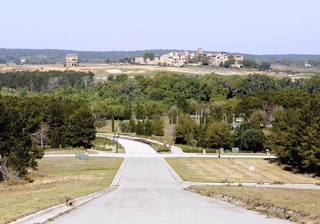Article Courtesy of The Orlando Sentinel
By Mary Shanklin
Published March 31, 2013
Florida by far leads all other U.S. states in the number of "zombie" foreclosures — vacant houses that are in some stage of being repossessed by mortgage lenders.
The state had 90,556 foreclosed homes that were empty during the first quarter — about three times as many as Illinois, which had the second-biggest number of vacant foreclosures, according to RealtyTrac Inc.'s first U.S. Foreclosure Inventory Analysis.
|
Lake County's Bella Collina community, which has many foreclosed home sites, also has a couple of vacant houses in foreclosure. |
houses in some stage of foreclosure had no one living in them.
For the most part, Central Florida counties also had relatively moderate rates of the zombie foreclosures: Orange County, 35 percent of 12,620 foreclosed houses; Osceola, 33 percent of 4,468 foreclosed houses; and Lake, 31 percent of its 3,829 foreclosed houses.
Within the four-county metro area, only Seminole exceeded the statewide average, with no one home at 46 percent of its 5,069 foreclosed houses. Neighboring Volusia County had one of the highest rates in the state: 53 percent.
Also in today's report: Florida was one of three states in which the listed inventory of foreclosures was up from a year ago; New York and New Jersey were the other two. In those three states, the number of homes just entering foreclosure accounted for the entire increase in overall foreclosures.
Nationally, the U.S. government held the largest inventory of foreclosed homes, with properties from Fannie Mae, Freddie Mac and the Department of Housing and Urban Development. Bank of America and Wells Fargo also dominated the nation's pool of foreclosures. Lenders and mortgage servicers experiencing the biggest increases in foreclosures from a year earlier included Nationstar Mortgage, Green Tree Servicing LLC and Onewest Bank.
"Delinquent loans that fell into a deep sleep after the robo-signing controversy in late 2010 are gradually coming out of hibernation following the finalization of the national mortgage settlement in April 2012," said Daren Blomquist, RealtyTrac vice president.
"The settlement provided some closure regarding accepted foreclosure-processing practices," he added, "and as a result lenders have been reviving more of these delinquent loans and pushing them into foreclosure over the past 12 months, particularly in states where a lengthy court process has resulted in a bigger backlog of non-performing loans still in snooze mode."
